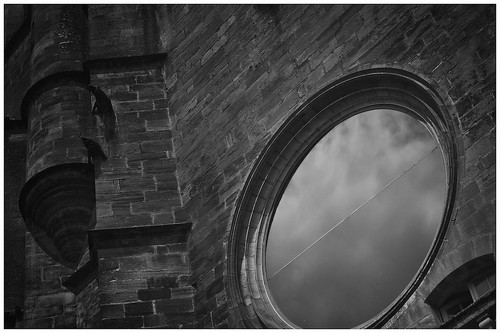N this case the mechanism in unknown so precision and recall cannot be calculated. The hypothesized mechanism inves a RNA guide TD-198946 joining two mRNA modules by binding to nt regions in the ends of each module. Since the hypothesized anchors are of nt,Table Top rated ten patterns developed from the ideal replicate using stacking power cutoffP-Value .E- .E- .E- .E- .E- .E- .E- .E- .E- .E- Freq Pattern –truefalse- –falsetrue- –truefalsefalse- –falsetrue- –falsetrue- –truetrue- –truefalse- –falsetruefalse- –truetruefalse- –falsefalsefalse- TP the minimum complementary length was set to this value having a low GU maximum to make sure only excellent anchors are designed. The maximum quantity of molecules was enhanced to , considering that are inved in the hypothetical mechanism. Normalization was set to bins, and p-value and help have been set toand respectively. The value of K was initially set to to PubMed ID:http://www.ncbi.nlm.nih.gov/pubmed/23516626?dopt=Abstract return the simplest probable structure, but the resulting set was empty. Growing the K worth to returned lots of extra results. The prime outcomes of this experiment are presented in TableAs can be seen inside the pattern column of your table, from the patterns have two intermolecular nodes so they have potential to become a ppRNA. On the other hand, the patterns with two intermolecular nodes adjacent one another are constantly around the identical module, which leaves patterns and as possible ppRNA. The initial pattern has embeddings that include anchors on module too as anchors on moduleThe embeddings on the third pattern also cover module and on top of that module and moduleFrom the third pattern, a hypothetical ppRNA is often constructed (Figure). This structure has two stems, a single followed by the other, and two anchors close to the first stem. The very first anchor is just upstream from the stem, while the other one particular is inside the stem. The double stem-loop with an anchor inside the stem  is related towards the gRNA structure. Having said that the locations
is related towards the gRNA structure. Having said that the locations  with the anchors around the modules usually are not near the end, so this might make this structure not viable.Overall performance comparisonThere will not appear to become any published algorithms attempting to locate each intermolecular and intramolecularTable Major benefits for Diplonema papillatum dataP-Value .E- .E- .E- .E- .E- Freq. Pattern –interintraintrainter –interinterintraintra –interintrainterintra –intraintraintra –interinterintraintraGawronski and Turcotte BMC Bioinformatics , (Suppl):S http:biomedcentral-SSPage ofFigure Predicted ppRNA. Predicted ppRNA primarily based around the second pattern of your MedChemExpress PSI-7409 outcome set. The red regions mark the anchor which bind to module and module .structures on this scale. Nevertheless there are many tools accessible for discovering intramolecular, RNA structural motifs. Consequently for comparison we performed experiments limiting the algorithm to seek out only intramolecular structures. The outcomes were in comparison to those of thepopular tool CMFinder. The dataset made use of to for these experiments was produced up of sequences, each roughly nt long, containing Selenocysteine insertion sequence (SECIS). This RNA structure contains stems of a variety of length nested inside each other.Gawronski and Turcotte BMC Bioinformatics , (Suppl):S http:biomedcentral-SSPage ofFigure Performance comparison. Precision and recall for RiboFSM and CMFinder for the SECIS dataset.The parameters made use of for RiboFSM allowed for stems of size with no cost energy under – kcalmol. No normalization was utilised and million iterations have been run. Moreover the maximum mismatch parameter was made use of (set to), which was omitted within the pr.N this case the mechanism in unknown so precision and recall cannot be calculated. The hypothesized mechanism inves a RNA guide joining two mRNA modules by binding to nt regions at the ends of each and every module. Since the hypothesized anchors are of nt,Table Prime ten patterns made in the finest replicate applying stacking energy cutoffP-Value .E- .E- .E- .E- .E- .E- .E- .E- .E- .E- Freq Pattern –truefalse- –falsetrue- –truefalsefalse- –falsetrue- –falsetrue- –truetrue- –truefalse- –falsetruefalse- –truetruefalse- –falsefalsefalse- TP the minimum complementary length was set to this worth having a low GU maximum to make sure only superior anchors are made. The maximum quantity of molecules was improved to , since are inved within the hypothetical mechanism. Normalization was set to bins, and p-value and help have been set toand respectively. The worth of K was initially set to to PubMed ID:http://www.ncbi.nlm.nih.gov/pubmed/23516626?dopt=Abstract return the simplest possible structure, but the resulting set was empty. Growing the K value to returned several more benefits. The top final results of this experiment are presented in TableAs is usually observed in the pattern column from the table, in the patterns have two intermolecular nodes so they have prospective to become a ppRNA. On the other hand, the patterns with two intermolecular nodes adjacent one another are usually on the very same module, which leaves patterns and as potential ppRNA. The first pattern has embeddings that incorporate anchors on module too as anchors on moduleThe embeddings of the third pattern also cover module and furthermore module and moduleFrom the third pattern, a hypothetical ppRNA can be constructed (Figure). This structure has two stems, one particular followed by the other, and two anchors near the initial stem. The initial anchor is just upstream in the stem, though the other 1 is within the stem. The double stem-loop with an anchor within the stem is equivalent to the gRNA structure. Nonetheless the locations on the anchors around the modules are usually not near the finish, so this may well make this structure not viable.Efficiency comparisonThere will not seem to be any published algorithms attempting to seek out each intermolecular and intramolecularTable Top rated outcomes for Diplonema papillatum dataP-Value .E- .E- .E- .E- .E- Freq. Pattern –interintraintrainter –interinterintraintra –interintrainterintra –intraintraintra –interinterintraintraGawronski and Turcotte BMC Bioinformatics , (Suppl):S http:biomedcentral-SSPage ofFigure Predicted ppRNA. Predicted ppRNA based around the second pattern with the result set. The red regions mark the anchor which bind to module and module .structures on this scale. On the other hand there are plenty of tools available for getting intramolecular, RNA structural motifs. As a result for comparison we performed experiments limiting the algorithm to discover only intramolecular structures. The outcomes have been compared to those of thepopular tool CMFinder. The dataset employed to for these experiments was made up of sequences, every approximately nt lengthy, containing Selenocysteine insertion sequence (SECIS). This RNA structure consists of stems of several length nested inside one another.Gawronski and Turcotte BMC Bioinformatics , (Suppl):S http:biomedcentral-SSPage ofFigure Overall performance comparison. Precision and recall for RiboFSM and CMFinder for the SECIS dataset.The parameters used for RiboFSM permitted for stems of size with free of charge power under – kcalmol. No normalization was employed and million iterations had been run. Additionally the maximum mismatch parameter was applied (set to), which was omitted within the pr.
with the anchors around the modules usually are not near the end, so this might make this structure not viable.Overall performance comparisonThere will not appear to become any published algorithms attempting to locate each intermolecular and intramolecularTable Major benefits for Diplonema papillatum dataP-Value .E- .E- .E- .E- .E- Freq. Pattern –interintraintrainter –interinterintraintra –interintrainterintra –intraintraintra –interinterintraintraGawronski and Turcotte BMC Bioinformatics , (Suppl):S http:biomedcentral-SSPage ofFigure Predicted ppRNA. Predicted ppRNA primarily based around the second pattern of your MedChemExpress PSI-7409 outcome set. The red regions mark the anchor which bind to module and module .structures on this scale. Nevertheless there are many tools accessible for discovering intramolecular, RNA structural motifs. Consequently for comparison we performed experiments limiting the algorithm to seek out only intramolecular structures. The outcomes were in comparison to those of thepopular tool CMFinder. The dataset made use of to for these experiments was produced up of sequences, each roughly nt long, containing Selenocysteine insertion sequence (SECIS). This RNA structure contains stems of a variety of length nested inside each other.Gawronski and Turcotte BMC Bioinformatics , (Suppl):S http:biomedcentral-SSPage ofFigure Performance comparison. Precision and recall for RiboFSM and CMFinder for the SECIS dataset.The parameters made use of for RiboFSM allowed for stems of size with no cost energy under – kcalmol. No normalization was utilised and million iterations have been run. Moreover the maximum mismatch parameter was made use of (set to), which was omitted within the pr.N this case the mechanism in unknown so precision and recall cannot be calculated. The hypothesized mechanism inves a RNA guide joining two mRNA modules by binding to nt regions at the ends of each and every module. Since the hypothesized anchors are of nt,Table Prime ten patterns made in the finest replicate applying stacking energy cutoffP-Value .E- .E- .E- .E- .E- .E- .E- .E- .E- .E- Freq Pattern –truefalse- –falsetrue- –truefalsefalse- –falsetrue- –falsetrue- –truetrue- –truefalse- –falsetruefalse- –truetruefalse- –falsefalsefalse- TP the minimum complementary length was set to this worth having a low GU maximum to make sure only superior anchors are made. The maximum quantity of molecules was improved to , since are inved within the hypothetical mechanism. Normalization was set to bins, and p-value and help have been set toand respectively. The worth of K was initially set to to PubMed ID:http://www.ncbi.nlm.nih.gov/pubmed/23516626?dopt=Abstract return the simplest possible structure, but the resulting set was empty. Growing the K value to returned several more benefits. The top final results of this experiment are presented in TableAs is usually observed in the pattern column from the table, in the patterns have two intermolecular nodes so they have prospective to become a ppRNA. On the other hand, the patterns with two intermolecular nodes adjacent one another are usually on the very same module, which leaves patterns and as potential ppRNA. The first pattern has embeddings that incorporate anchors on module too as anchors on moduleThe embeddings of the third pattern also cover module and furthermore module and moduleFrom the third pattern, a hypothetical ppRNA can be constructed (Figure). This structure has two stems, one particular followed by the other, and two anchors near the initial stem. The initial anchor is just upstream in the stem, though the other 1 is within the stem. The double stem-loop with an anchor within the stem is equivalent to the gRNA structure. Nonetheless the locations on the anchors around the modules are usually not near the finish, so this may well make this structure not viable.Efficiency comparisonThere will not seem to be any published algorithms attempting to seek out each intermolecular and intramolecularTable Top rated outcomes for Diplonema papillatum dataP-Value .E- .E- .E- .E- .E- Freq. Pattern –interintraintrainter –interinterintraintra –interintrainterintra –intraintraintra –interinterintraintraGawronski and Turcotte BMC Bioinformatics , (Suppl):S http:biomedcentral-SSPage ofFigure Predicted ppRNA. Predicted ppRNA based around the second pattern with the result set. The red regions mark the anchor which bind to module and module .structures on this scale. On the other hand there are plenty of tools available for getting intramolecular, RNA structural motifs. As a result for comparison we performed experiments limiting the algorithm to discover only intramolecular structures. The outcomes have been compared to those of thepopular tool CMFinder. The dataset employed to for these experiments was made up of sequences, every approximately nt lengthy, containing Selenocysteine insertion sequence (SECIS). This RNA structure consists of stems of several length nested inside one another.Gawronski and Turcotte BMC Bioinformatics , (Suppl):S http:biomedcentral-SSPage ofFigure Overall performance comparison. Precision and recall for RiboFSM and CMFinder for the SECIS dataset.The parameters used for RiboFSM permitted for stems of size with free of charge power under – kcalmol. No normalization was employed and million iterations had been run. Additionally the maximum mismatch parameter was applied (set to), which was omitted within the pr.